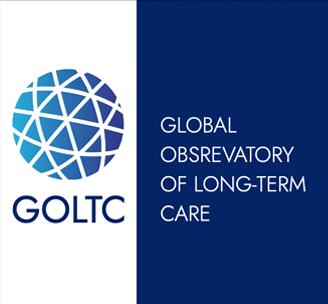Project Summary
Few countries monitor and produce information on long-term care provision’s demand, profile, and characterization. Data from health systems, health surveillance, and social assistance are generally consolidated separately, making it challenging to integrate this information. The lack of comprehensive data makes the needs of the population that needs such care invisible. Very little is known about Brazil’s long-term care facilities (LTCF) characteristics. Information from the only national census is more than 15 years old and does not reflect the sector’s evolution. Data collected by government agencies and regional initiatives are not comprehensive enough to characterize these institutions, their residents, and their workers. This study aims to develop, validate and test a standardized instrument that allows the longitudinal collection of a minimum set of data on LTCF in Brazil to foster the creation of a national public directory of relevant information on the sector. It is a mixed methods research, including a scoping review and methodological research, which will be carried out in two large blocks. Block 1 includes mapping data collection instruments on quality of care and quality management for LTCF produced by regional, national, and international initiatives to identify relevant variables and items for elaborating a Brazilian instrument. Block 2 consists of the development, validation, and pre-testing of a standardized tool, including stakeholder consultation, adapted for the longitudinal collection of data on the sector in the country. The results and products of this project can be adopted at the national level, both in the planning and structuring of a national long-term care system and in the use of periodic census surveys. Successful, this methodology could be replicated in other low- and middle-income countries.
Outputs / expected Outputs
As described above
PUBLICATIONS & OTHER OUTPUTS | |
| Output 1 | Geospatial panorama of long-term care facilities in Brazil: a portrait of territorial inequalities OBJECTIVES: To map the number and geospatial distribution of Brazilian long-term care facilities (LTCFs) for older adults. Additionally, we sought to highlight the relationship between these findings and the number of older people in the country’s 27 Federation Units, demonstrating the growth of these facilities in the last decade. METHODS: This is a descriptive observational study, using secondary data, which was performed in 3 stages: 1) searching and consolidating national and subnational data from different sources and mapping LTCFs; 2) preparing a geospatial map using Brazilian postal codes; and 3) triangulating the number of facilities and of older people in each state and all 5 Brazilian regions. RESULTS: We found 7029 LTCFs in the country, mostly in the Southeast and South regions: São Paulo, Minas Gerais and Rio Grande do Sul had the highest numbers of facilities while states in the North region represented only 1.12% of Brazilian LTCFs. Geospatial mapping highlighted that 64% of the 5 570 Brazilian municipalities did not have any LTCFs for older adults. |
|---|---|
| Output 2 | Methodological description of the mapping of Brazilian long-term care facilities for older adults OBJECTIVE: To describe the methodological approach adopted to build a database of long-term care facilities (LCTFs) in Brazil. METHODS: This exploratory research was conducted for 12 months, between August 2020 and July 2021, based on primarily publicly accessible data. First, the Unified Social Assistance System (Sistema Único de Assistência Social [SUAS]) database from 2019 was adopted as the primary source of information. In addition, public agencies and managers were consulted and invited to share their databases, while researchers and private entities collaborated by making their spreadsheets available. Data were organized in spreadsheets for each Brazilian state. LTCFs not catering to older adults (aged 60 years and over) were excluded. Duplicate data were excluded when overlaps were identified. RESULTS: This brief communication describes the methodology adopted for mapping the current status of Brazilian LTCFs. Despite its caveats, this study represents an important advance in the identification, characterization, and monitoring of these services nationwide. A total of 5769 facilities were found in the 2019 SUAS census. After excluding facilities not caring for residents aged 60 years or over, this number decreased to 2381 LTCFs. The consolidation and filtering of information from multiple data sources led to the identification of 7029 LTCFs throughout the country. CONCLUSION: Building a solid database was paramount to devising a national policy on long-term care. By including multiple sources, the scope of this survey was wider than all previous efforts and constituted an unprecedented collaborative experience in the country, including the potential to become the first national dataset for the Brazilian LTC sector. |
| Output 3 | |

